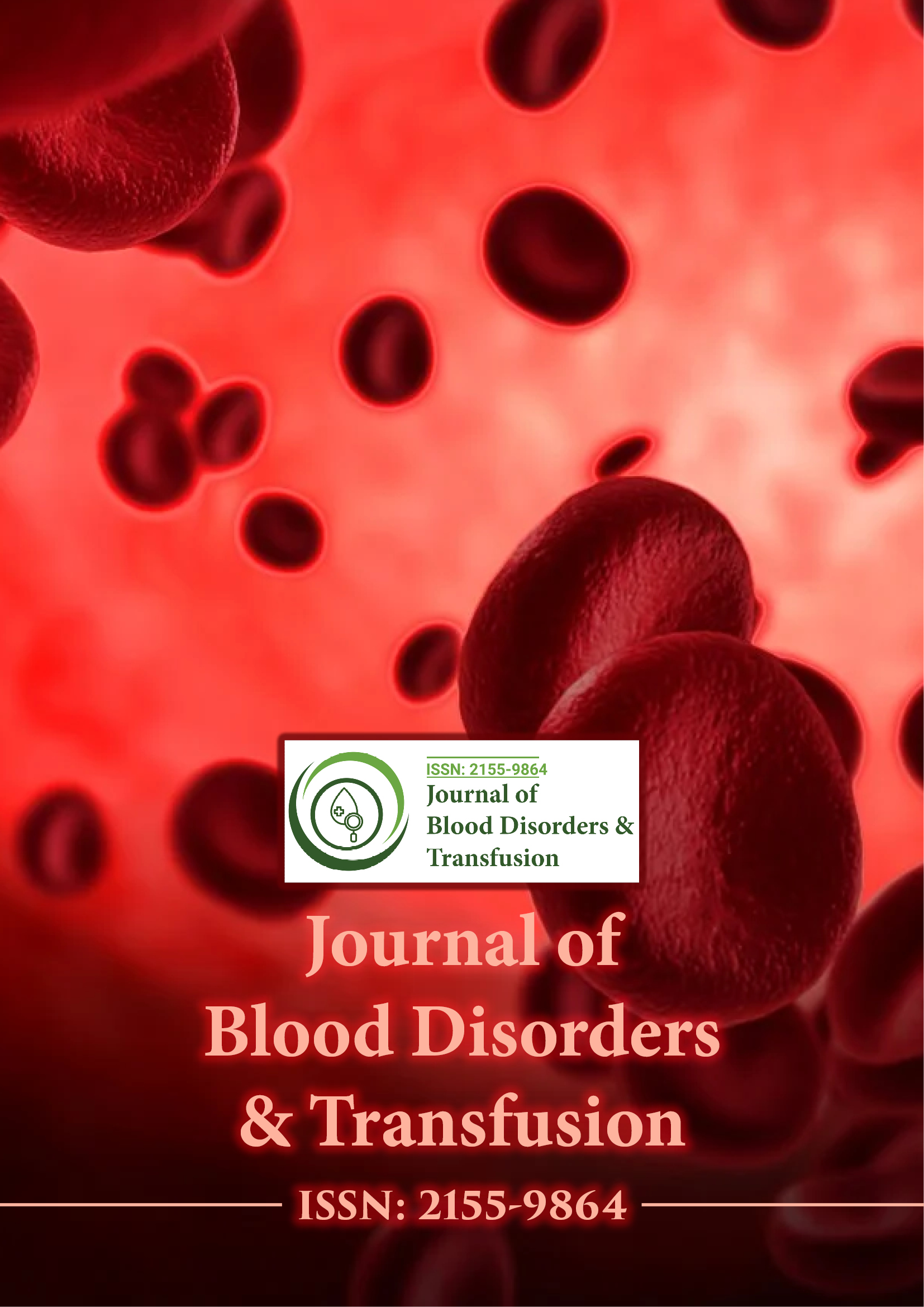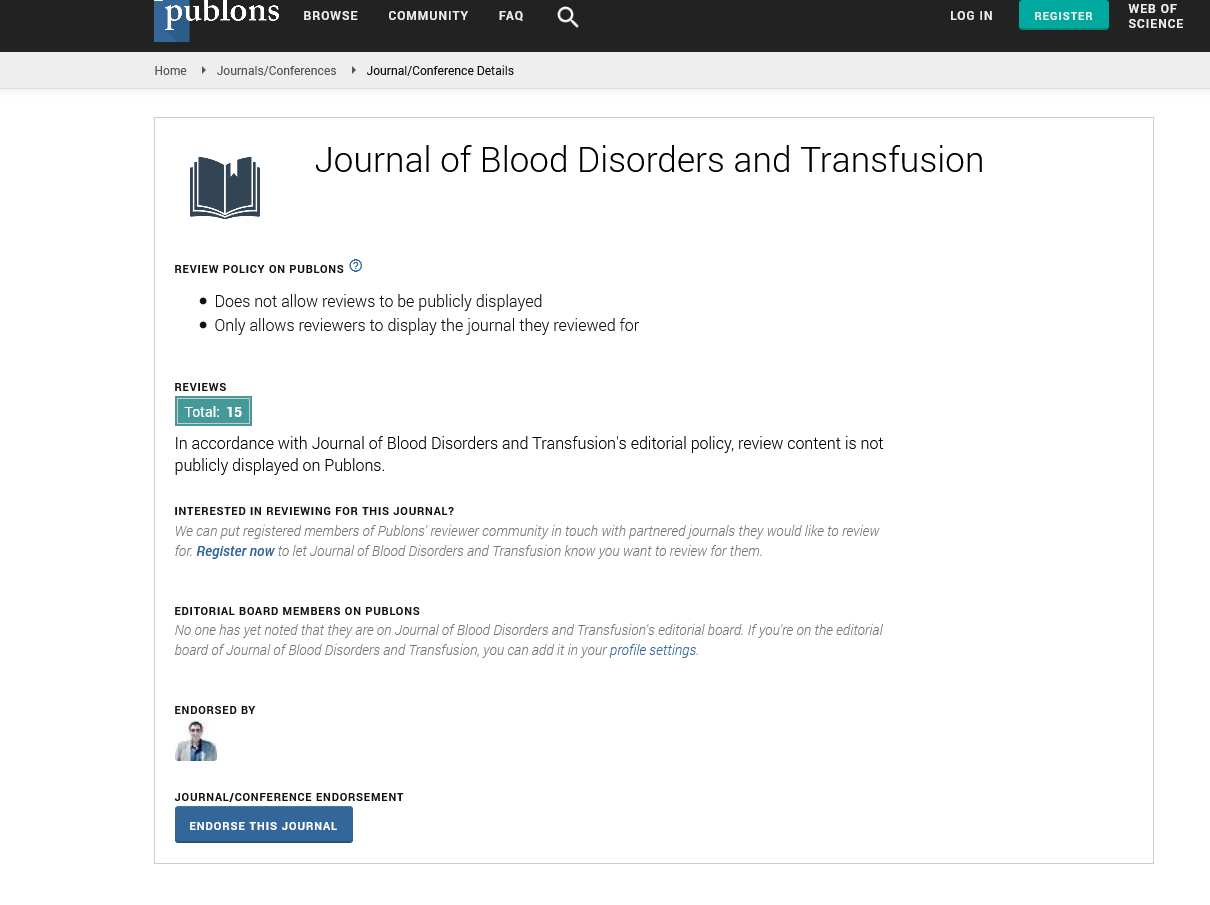Indexed In
- Open J Gate
- Genamics JournalSeek
- JournalTOCs
- Ulrich's Periodicals Directory
- RefSeek
- Hamdard University
- EBSCO A-Z
- OCLC- WorldCat
- Proquest Summons
- Publons
- Geneva Foundation for Medical Education and Research
- Euro Pub
- Google Scholar
Useful Links
Share This Page
Journal Flyer

Open Access Journals
- Agri and Aquaculture
- Biochemistry
- Bioinformatics & Systems Biology
- Business & Management
- Chemistry
- Clinical Sciences
- Engineering
- Food & Nutrition
- General Science
- Genetics & Molecular Biology
- Immunology & Microbiology
- Medical Sciences
- Neuroscience & Psychology
- Nursing & Health Care
- Pharmaceutical Sciences
Female gender participation in the blood donation process in resource poor settings: Case study of Sokoto in North Western Nigeria
2nd International Conference on Hematology & Blood Disorders
September 29-October 01, 2014 DoubleTree by Hilton Baltimore-BWI Airport, USA
Dorcas Ikhuenbor, Erhabor O, Isaac Z, Abdulrahaman Y, Aghedo F, Ibrahim KK and Ibrahim S
Scientific Tracks Abstracts: J Blood Disorders Transf
Abstract:
Background: One of the biggest challenges to blood safety particularly in Sub-Saharan Africa is accessing safe and adequate quantities of blood and blood products. Aim: The present study was designed to investigate the level of female gender participation in the blood donation process in Sokoto, North Western Nigeria. Setting and Design: This is a retrospective study, which was carried out in UsmanuDanfodiyo University Teaching Hospital, Sokoto, Nigeria. Materials and Methods: In this present retrospective study, we investigated the level of female gender participation in the blood donation process by evaluating the blood donation records of 14,956 blood donors who visited the blood bank in UsmanuDanfodiyo University teaching hospital for blood donation purpose between 2010 and 2013 in Sokoto, North Western Nigeria. Results: Subjects for this retrospective study included 14,965 blood donors. Mean age and age range of blood donors was 27.1?8.18 and 18-50 yearsrespectively. The total number of blood donors from January 2010 to July 2013 was 14,965. Donors included 14,871 males (99.4%) and 94 females (0.64%). The number of male donors was significantly higher than that of female donors (P=0.0001). The distribution of male and female donors yearly from 2010 to 2013 was (2,916, 4,787, 4687, 2,481) and (25, 28, 16 and 25) respectively. Of the total number of blood donors, a significant 14,891 (99.5%) were family replacement donors while 74 (0.50%) were voluntary non-remunerated blood donors (0.0001). Out of the 74 voluntary non-remunerated donors, 18 were females while 56 were males. There was a male gender bias in the probability of a donor being voluntary non- remunerated. Of the female donors, 18/94 (19.1%) were voluntarily non-remunerated compared to 56/14,871 (0.38%) P=0.003. Conclusion: Female gender participation in the blood donation in North Western Nigeria is significantly lower compared to findings from developed countries. There is need to develop evidence-based educational, cultural and religious- focused intervention that encourages females to donate blood. There is need to educate the female population to address the negative perceptions against blood donation and the importance of blood donation.

